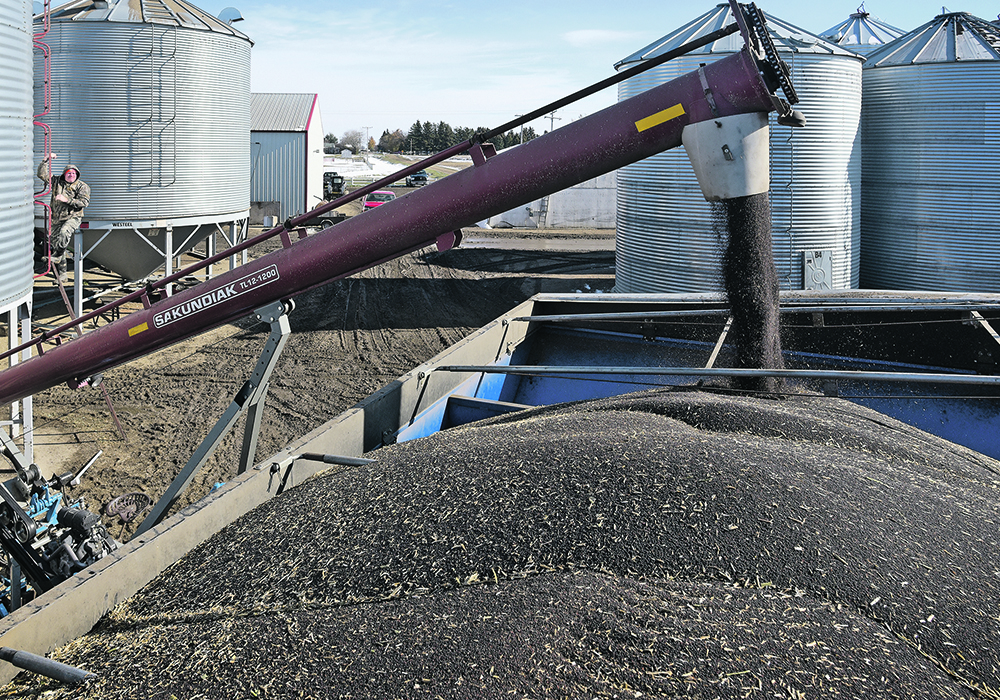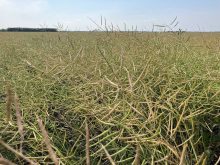Analysts aren’t sure whether the huge increase in sales in November was a one-time event or sign of a longer-term trend
China’s canola imports shot up in a big way in November.
The Asian giant purchased 477,000 tonnes of the oilseed, up from an average of about 100,000 tonnes per month the previous nine months.
It is China’s largest monthly import total since January 2019. That was two months before the market access restrictions on Canadian canola were implemented in March 2019. Those restrictions were finally lifted in May 2022.
The big question is — was the November surge an anomaly or a sign of things to come? The answer depends on who you’re asking.
Marlene Boersch, managing partner of Mercantile Consulting Venture, is optimistic about the export sales outlook.
“I see that demand from China staying with us for a while,” she said.
Today’s crush margins are being fueled by oil rather than meal, and canola has more oil content than soybeans, so it is the more attractive oilseed in domestic and overseas markets.
“In my view, I think we’ll see very good demand at the West Coast for the next while as long as the oil value holds up,” she said.
“Luckily we have somebody like G3 who doesn’t have crush facilities, who will be very pleased to use their export facility for that purpose.”
Wayne Palmer, analyst with Exceed Grain Marketing, thinks China’s huge November import program was more of a one-off.
He believes Chinese buyers saw canola values tumble in November and pounced.
“They’re shrewd. They see those things before anybody else does,” said Palmer.
“They probably picked off a lot of people and got some great prices.”
He doesn’t think the buying spree will last because China has problems with COVID and its economy.
However, there will still be strong demand from crushers in Canada and elsewhere around the world, and that, combined with Canada’s disappointing supply, will keep prices elevated.
Statistics Canada’s latest estimate is 18.2 million tonnes of Canadian production, well below the 20 million tonnes analysts were forecasting around harvest time.
“We definitely have a supply problem,” said Palmer.
“If we have adequate demand, we’re not going under $800 (per tonne). We can’t.”
He noted that Argentina’s soybean crop is compromised, and the January forecast for Brazil calls for hot and dry weather.
“We’re not going back down here to $550 or $600 canola any time soon,” said Palmer.
However, Canada is facing stiff competition in export markets.
Ukraine harvested 3.2 million tonnes of canola in 2022-23, a 5.5 percent increase over the previous year, according to UkrAgroConsult.

That is the second largest canola crop on record, next to the 3.47 million tonnes produced in 2019-20.
The war-torn country has surprised the market by shipping out 2.9 million tonnes of the oilseed with the help of the United Nations’ Black Sea grain corridor.
UkrAgroConsult is expecting an increase in winter canola planting in Ukraine and another three million tonnes of production in 2023-24.
Australian farmers are harvesting what is expected to be a record 7.62 million tonnes of canola, despite one of the most challenging harvests ever seen on the country’s east coast.
“Western Australia alone will deliver what would have been regarded as a strong national crop a few years ago, of over 4.2 million tonnes,” the Australian Oilseeds Federation said in a press release.
Waterlogging, disease and flooding damage in New South Wales and Victoria did not significantly impact the volumes harvested across those states, or the quality and oil levels of the crop.
“The absolute size of this year’s crop is testament to the investment in disease management, best practice agronomy, and broader farming-systems work that has been undertaken in recent years,” said AOF chief executive officer Nick Goddard.
















